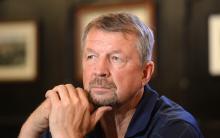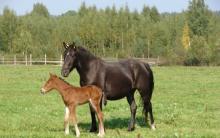"Chekhov's stories lesson" - "Man in a Case." "Gull". "Anna on the neck." Quiz. "Uncle Vanya", What stories by A.P. Chekhov have you read? Brought the writer world fame. "Ionych." "House with mezzanine". Melikhovo's insights. "Duel". "House with mezzanine". Plays. "Lady with a dog". “A.P. Chekhov is an incomparable artist of life.”
"Intruder" - Nuts secure the rails to the sleepers. Why is the story called "Intruder"? The investigator believes the man. What could happen if you unscrew the nut? An attacker is a person who has committed a crime. What should the investigator do with the man? The guy has stolen nuts before. Sinker is a weight suspended on the line of a fishing rod.
“Chekhov's Stories” - But Lydia is deprived of true, wonderful feelings. And the house with the mezzanine becomes empty after Zhenya leaves. The heroine goes to the sea only because it is customary in society to go to the sea. And the artist enters into an ideological struggle with Lydia Volchaninova, trying to comprehend life more deeply. In Russia during Chekhov's time, patriarchal ideas about love and marriage were very strong.
“The Man in a Case” - Behind Belikov there is a terrible force - suspicion, perjury, denunciation. “Swallow, goddamn spider” (Kovalenko). Objects express attempts to protect themselves from reality. Hat case, hat maker; spectacle, eyeglass case. The author's position in the story by A.P. Chekhov's "Man in a Case". CASE m. German. a box, a casket, a tube, a packing bag, a case in which the item to be saved is placed.
“Chekhov's Gooseberry” - The stories are connected by a common plot, characters, ideas. (analysis of A.P. Chekhov’s stories “The Man in a Case”, “Gooseberry”, “About Love”). Conclusion. Problems of stories. Purpose of work: “Gooseberry”. Chekhov depicts various forms of “case” life. A case for feelings, for love. Reveal the ideological and artistic originality of the stories.
"Chekhov's White-fronted" - Smart. Borrow from the library and read books by A.P. Chekhov about animals. Parents of A.P. Chekhov. Chekhov is a doctor. Anton Pavlovich Chekhov 1860 - 1904. Artistic; Scientific - educational; Historical. Balovnoy. Prepared by: primary school teacher Zharikova E. A. Why is the story called white-fronted? Melikhovo.
The Bashkir breed of horses is widespread in the areas of Bashkiria, Tatarstan, Chelyabinsk region and Kalmykia. The tribe arose as a result of the hybridization of horses from the Asian steppes with forest representatives of the northern habitats. Their value lies in their close relationship with tarpans, wild horses that are now completely exterminated. The tarpans were not very large in size, mostly mousey in color. The Bashkir horse often has a nighting or savras color, but is otherwise similar to its exterminated ancestors.
The key circumstance that influenced the formation of the external appearance of the Bashkir horse breed is the climatic conditions of the continental type in Bashkiria. Over the many years of living in these territories, the horses have adapted to the cold winter and learned to get their food from under the snow mounds.
The peoples of Bashkiria live sedentary lives and are mainly engaged in agriculture, therefore horses were mostly used for land and agricultural work. The area of use also left its mark on the appearance of the horses. The photo of a horse of the Bashkir breed clearly shows signs of dissimilarity with other aboriginal breeds: their skeleton is more developed, and their head is not so dry.
Description:
- horses of the Bashkir breed are small in size (142-145 cm);
- despite their small stature, they are beautifully built, bony, strong;
- the skull is medium-sized, rather rough;
- cervical region of medium size, lean;
- a flat, wide dorsal region is the main feature of working-type breeds;
- the sacrum is rounded, slightly lowered, the chest is wide;
- the limbs are dry, strong, the hooves are strong.
The photo of a horse of the Bashkir breed amazes with its beauty. In cold weather, like most inhabitants of the northern regions, these pets begin to actively grow hair. Tails and manes become simply luxurious in winter, and the entire body is covered with curly fur. It is noteworthy that the dense vegetation on their body does not require frequent cleaning.
Pets are not at all picky about their care: in the summer they can feed on pasture on their own, but for wintering they need to make hay.
The Bashkir breed of horses adopted the color from their ancestors, the Tarpans. The color can be mousey, savras (typical of individuals of the steppe subgroup), dun, red, brown, game, gray.
Norov
The character of animals was formed under the interaction of climatic conditions and kinship with people from forest and steppe habitats. Tribes of the Bashkir horse breed often consist of untamed or semi-domesticated individuals with a strong sense of responsibility and ownership. The herds are divided into communities and schools, each of which has its own leader, a stallion. The leader protects the school from strangers and predators.
The Bashkir breed of horses combines the specific features of representatives of the steppes and forests. The herd can be left perfectly unattended. The leader stallion does not allow the herd to scatter and does not allow strangers to get close. This also applies to people: horses trust only well-known riders.
What are the breed subtypes?
Horses of the Bashkir breed are:
- steppe;
- mountain
The difference between them lies in size, performance and external qualities. According to economic characteristics, several types are also distinguished, the configuration of which is carried out depending on the level of milk yield, as well as adaptability to the harness and saddle. Representatives of the steppe regions are more suitable for riding due to their structural features. Bashkir horses of the steppe subgroup have a lighter skull, long limbs and a stately body. They have a playful and playful character.
There are also draft and riding categories of Bashkir horses. They are valued for their speed, endurance, ease of control, and the ability to run huge distances without food or drink. Horses are affectionate and simple-minded, which made them loyal comrades of the military during the Second World War, and today allows people to be taught horse riding and used in hippotherapy.
How to choose the right horse for yourself?
Depending on the area in which the animal will work, selection is made.
- A stallion is perfect for working in the field and transporting various loads. He is stronger and more resilient compared to the mare.
- An adult mare is selected for dairy production. If you purchase a Bashkir breed foal for the same purposes, you can determine the level of productivity based on the amount of milk produced by the mother. The productivity rate is 1500-2000 liters per year.
- For riding, you can purchase an individual of any gender. The Bashkir horse is popular due to its playfulness, speed of movement, and talent for running long distances. Their docile nature makes the Bashkir horse breed ideal for horse riding training for adults and children.
Do not forget that for full-fledged work, especially if the horse is used for difficult work, it requires auxiliary balanced feed. A properly selected diet will keep the animal healthy.
The Bashkir horse breed is a local breed; it is quite widespread in Bashkiria, as well as in Tatarstan, the Chelyabinsk region and Kalmykia.
This breed appeared in ancient times from the crossing of steppe horses brought from Asia with northern forest horses.
These Bashkir horses are very interesting primarily because they are the closest descendants of tarpans - wild horses, unfortunately, now exterminated.
Tarpans were small in size and mouse-colored. Representatives of the Bashkir breed are most often salty or savras, but otherwise are very similar to their extinct ancestors.
“Bashkirs” are completely unpretentious in food and maintenance. They can live in the open air almost all year round, feeding on pasture.
By winter, they grow thick, long hair that, unlike other horses, does not require constant brushing.
In search of grass, they, like wild horses, rake snow 10 cm thick with their hooves. Of course, during heavy snow drifts they are provided with both food and shelter.

For them, hay is usually prepared on winter pastures and pens are set up - covered spaces where they can go if necessary.
By nature, horses of the Bashkir breed are actually wild, or semi-wild.
Herds are usually divided into several schools - separate groups of mares with young animals.
In each such school there is a leader - a stallion-stallion, who zealously protects his charges not only from rival stallions, but also from any threatening predators. Sometimes, at the cost of your life!

If there is a “Bashkir” in the herd and the herd is being kept on pasture, the horses can be safely left under the supervision of such a stallion. He will not only prevent the herd from scattering and going far, but he will also not allow strangers to approach him: neither horses, nor people - only a few familiar handlers.

In addition to these habits, which are quite unusual for most breeds, Bashkirs have several more unique features. For example, this is one of the very few breeds that does not cause an allergic reaction in people who are allergic to horses. Therefore, Bashkirs are considered hypoallergenic.
Horses of the Bashkir breed are also original in that they are used not so much as draft horses and riding horses, but for milk production.
Many Bashkir mares produce more than 2000 liters of milk per year.
Height at withers: 135-140 cm,
Weight: 250–350 kg,
There are two types of Bashkir horses - riding and draft.
Colors: savrasaya, mousey, dun, and among representatives of the riding-harness type there is also red, game, brown, gray.
Kira Stoletova
Horses are people's best friends after dogs. They will always and everywhere be used not only for riding, but also for work. The Bashkir horse breed is one of the most popular and relevant varieties. The Bashkir horse is excellent not only for work, but also for producing meat and milk.

Theories about the breed
As experts have found out, horses of the Bashkir breed have developed their qualities over many centuries. Even today, the DNA of Bashkir horses is being formed and improved. The DNA of the variety reveals the participation of two breeds in its creation: these are local wild animals that lived in Bashkiria, and other breeding horses from Tarpanov.
Nomadic people took horses with them and did not look after them; they let them run around on the spacious steppes, as a result of which the Bashkir breed horses crossed with almost all breeds around the world. Experts say with confidence that the breed “carries” many different DNAs and no one will ever know in which generation new or old genes will be revealed.
Experts say that the Bashkir horse breed is an animal that holds the middle ground between forest and steppe wild horse breeds. A large population of these animals does not change this fact. Natural selection became the main engine in the formation and approval of horses of the Bashkir breed. The Bashkir horse has almost no special features, but is distinguished by incredible endurance and unpretentiousness. In 1971, this breed, or rather several of its representatives, was transported to America, where they gave their name and recorded in documents as the American Bashkir Curly.
What is remarkable about the breed
Bashkir horses are generally not suitable for riding. This is a breed of hard workers, but not racers. They are too free and freedom-loving, they do not like to obey. These are free individuals who do what they see fit. Bashkir breeds of horses worked too hard and for a long time in agriculture and in vegetable gardens, and because of this they developed a skeleton in which there are no excessive growths of fluid.
The Bashkir horse breed has a very strong and powerful skeletal structure. The horse's body is very massive and wide, 2 or even 3 times larger than that typical for other horse breeds. The croup of this species is slightly lowered, the withers are set low, but at the same time it does not look bulky. A distinctive feature of the breed is its straight back; working horses often have an arched back.
The legs, like those of any work horse, are short and very strong. The bone structure is wide and durable. Due to the fact that animals very often have to look for food to live under the snow, their hooves are strong and durable and must withstand severe frosts and the hardest soil. They can easily and painlessly endure even the most severe frosts - 40°C. Despite the animal’s small stature, 1 m of snow is not a problem for them; they can get through anywhere.
The horses' head is located on a very thick and strong, but short neck. The head has a straight profile with a large and elongated forehead. When you look at a horse of this breed, it seems that the head is 2 times larger than the body itself. Females of this species are smaller in size than males. Adults weigh from 410-450 kg, and the live weight of a horse is 460-490 kg. According to measurements at the withers, the stallion reaches a height of 1 m and 42 cm, and the girl - 1 m and 38 cm. The chest circumference of both the stallion and the female reaches 1 m 17 cm. The heels of the animals are no more than 20 cm. In the photo you can see how beautiful and big the stallion is compared to the mare.
Appearance
In the photo you can see how beautiful these creatures are and how harmonious they look against the background of snow. The breed's coat flutters and curls easily in the wind; this process is especially noticeable in winter. This is when the animals curl up the most. Because of this feature, the horses got their name - curly.
In summer, this process is practically unnoticeable, since during this period the coat becomes much shorter than in winter. Throughout the year there are constant changes in the coat. Most often, hair falls out almost completely by summer so that new and strong hairs grow in winter.
The color range of this breed is not very diverse. You can often find representatives of this species of red, brown and mastitic color. They are very energetic and inquisitive creatures, they can run away for a couple of days to explore the territory.
Special Features
This breed is distinguished by special herd instincts. It is very rare to see only one representative of this species walking across a field. Most often, where there is one animal, there is a herd. Pets can be divided into several groups, but they will not move more than 300 m from each other. As in any herd, where one strongest leader is responsible for his animals, here the strongest and fastest stallion is the head, who always leads the whole herd. In case of danger, he quickly gathers everyone with his neighing and builds them in such a way as to protect them from possible danger. He may even sacrifice his life to save others.
Through the eyes of animals #289 (Ufa stud farm No. 119 and the Bashkir breed of horses)
The Bashkir horse breed needs to be preserved and increased
Bashkir breed of horses "Vorontsovo"
Due to the fact that horses are not very whimsical, they easily adapt to any conditions and can find food anywhere. As many experts say, young animals raised at home grow up to be very submissive, kind and sweet. But even those who grew up in the fields can be tamed to the rules of the house. Horses can very easily get used to the conditions of pasture and enclosed space, but at first they will try to escape.
The following character traits can be observed in Bashkirs:
- ease of operation;
- perseverance;
- hard work;
- equilibrium;
- assertiveness;
- courage.
They are used in a variety of ways. Kind and unpretentious, they are good as labor. Much earlier, even in the times of great warriors, they were taken into the most powerful cavalry, and representatives of this species always marched in the front ranks, honorably carrying all the ammunition of the army. If you constantly train with horses, you can teach them to switch to the fastest gait and gallop. This is very difficult, not all horses in the world can do this, even with the strongest legs.
Conclusion
In Bashkiria, there is still a tradition of organizing horse races, races and performances with this species and using it for horse riding. Today, this breed is used more for meat and dairy production. The livestock multiplies very quickly. The demand for such horses is very high. Most often, horses are delivered to Asia. All herds are excellent at finding and obtaining food for themselves. Most often, the leader first goes to explore the territory to be sure that there is no danger anywhere and that he can eat safely.
If you constantly feed your herd well, the amount of milk will double. On average, representatives of this species produce 1.6 tons of milk, but you need to be careful, since if you overfeed the animal, there is a high probability that the meat will become fatty and the cost of production will increase.
This breed is very popular today, very easy to care for and does not require much attention. The only difficulty is that you cannot keep only one or a couple of representatives of this species: they live only in a herd and they must always have a leader who will be responsible for the entire herd. If you are interested in the breed, the site (or VK) will help you find out a lot of interesting things, discover “new horizons” for yourself, study the description and characteristics of these magnificent horses.
Nature can rightfully be called a very talented creator of all living things that can be seen on Earth. Thanks to its long-term development, many species and subspecies of animals, as well as even more numerous breeds, arose in the course of evolution. This article talks about amazing Bashkir horses. How does the Bashkir horse breed differ from its various relatives?
So, the Bashkir horse is a special variety, found mainly in a small area of the Southern Urals. Its ancestors are more ancient breeds that once lived in the same area - forest and steppe types.
The formation of the Bashkir horse breed was influenced by the harsh continental climate characteristic of the Ural region. Anatomical features include a straight profile of the head; the horse’s forehead is quite wide.
The back is wide, and the horse's croup is moderately descended. In addition, the physique of this breed is characterized by a thick neck and low withers.
Bashkir horseman
There are some indicators and measurements for both stallions and mares. These parameters of the Bashkir horse breed include:
- Height at the withers (about 145 cm and 140 cm, respectively);
- Oblique body length (about 147 and 143 cm);
- Pastern girth (18.5 and 18);
- Live weight (450 kg and 400 kg).
It is intuitively clear that a horse breed does not appear overnight; it is preceded by quite a long time and some events. There are several interesting facts from the history of the breed.
So, the Bashkir breed of horses became widespread in the 17th–18th centuries. She was bred in stud farms in Orenburg, Perm, Samara and Kazan. Bashkir troikas at that time were famous for their endurance and reliability, because they could last about eight hours without rest and additional feeding, which was very profitable.
 Horse breeding in Bashkortostan
Horse breeding in Bashkortostan The Bashkir horse itself is more likely to be an agricultural horse, rather than a riding horse, because sedentary peoples most often used it for their daily needs. If you had to roam from place to place, it was usually over long distances.
It is the agricultural character that determines some of the qualities of the breed, namely its endurance. The horse's legs are strong, its character is balanced and calm.
Actually, the Bashkir horses themselves are incredibly interesting individuals. And, first of all, this is because they represent the closest descendants of the Tarpans. That is, wild horses, which, unfortunately, are now exterminated. The tarpans themselves were small in size and belonged specifically to the breed, but representatives of the Bashkir breed can often be nightingales. However, in all other respects, they are extremely similar to their own extinct ancestors.
 Concavity of the back Bashkir horse breed
Concavity of the back Bashkir horse breed
Bashkir breeds of horses almost all year round can easily live in the vastness of the Earth under the open skies, feeding on pasture feed. By the winter season, these beauties grow very long and thick fur, which, unlike the hair of other horses, will not require a stable process associated with cleaning.
If it is necessary to rake snow, they are perfectly adapted to finding grass even under a thick layer of snow.
Of course, during serious snow drifts, animals are provided with shelter and food. On winter pastures, hay is usually prepared in a special way for them. And they also put in pens, which are covered premises where the horses can go, if such a need arises. The character of such animals is, in fact, semi-wild or wild.
And herds are often divided into several schools at once, that is, into separate groups of fillies along with young animals. And each of these schools includes its own leader. This is a stallion who will zealously strive to protect his charges. And not only from competing stallions, but also from every predator that can cause a threat. At times, protection is carried out, no matter how sad it is to report, at the cost of the life of the leader himself.
In the event that there is a “Bashkir” in the herd, and the herd itself is kept on pasture grounds, the horses can be quite calmly left under the supervision of their brave stallion. A hardy creature, not only will not allow the entire herd to scatter, going too far, but also will not dare to let alien creatures near its “pupils”. It doesn’t matter if they are other horses or people. Only familiar riders are allowed.
In addition to all the above-mentioned habits, which are quite unusual for most horse breeds, the brave “Bashkirs” have several other unique features. For example, this breed of animal of this kind is only one of the few that exist in the world that cannot cause an allergic reaction in people. And this is the case if people are allergic to other horses.
 Herd of Bashkir horses Herd of Bashkir horses
Herd of Bashkir horses Herd of Bashkir horses
Characteristic
For this reason, the Bashkir breed is considered a hypoallergenic species. Also, these horses are very original in that they are used not so much as mounts and draft animals, but for the process associated with milk production. Many beautiful Bashkir fillies are capable of generously producing more than two thousand liters of milk annually.
Qualities of Bashkir horses
Russian local historian P.I. Rychkov in the book “Orenburg Topography” literally noted some qualities of the Bashkir breed: “The Bashkir horse has long been revered in Russia as strong horses.” In addition, the researcher paid tribute to their speed and swiftness.
The herds were kept by the Bashkirs both in summer and in winter, because the horses knew how to find food for themselves even under the snow, digging it out with their hoofs. However, it was still customary for riding horses to stock up on hay for future use.
The main qualities of a horse - strength and obedience to the rider, assertiveness - played a decisive role for the Bashkir troops. In other words, this breed was used in major wars.
Finally, for the Bashkirs themselves, this horse is of great importance. It is often mentioned in folk tales, in the Bashkir epic and many fairy tales. For example, such literary heroes as Tolpar and Akbuzat are known - magical winged horses.











Belarusian Skateboarding Federation
General fundamentals of throwing techniques Basic rules for teaching athletics throwing techniques
Grigory Drozd - biography - career - fight videos
Side effects of weight loss drugs
Spring conscription for sports companies has begun in CSKA